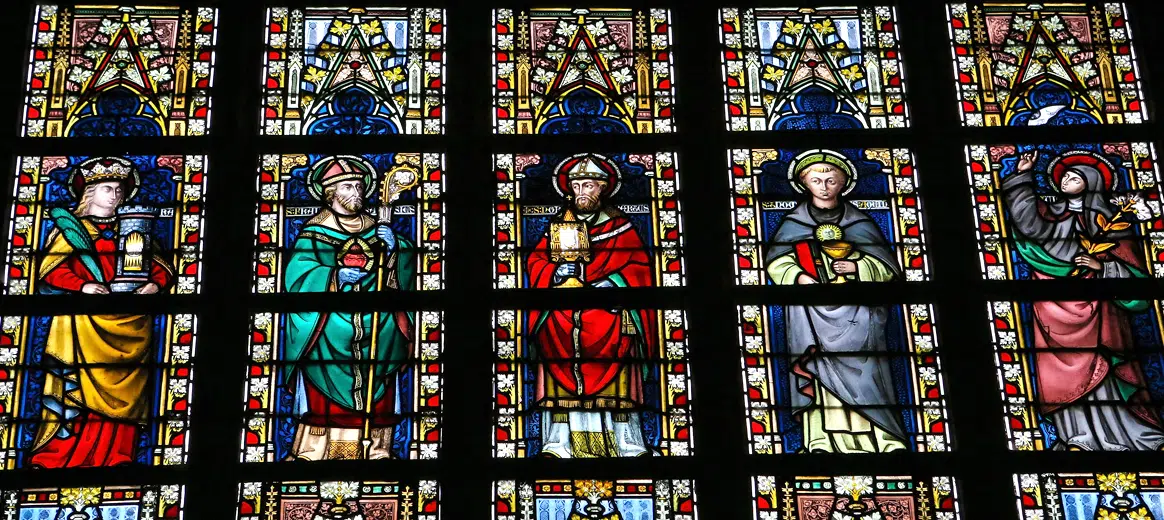St. James the Apostle
July 25
Two apostles bore the name James. The St. James we are discussing is called “the Greater” because with his brother St. John and St. Peter he was a member of Our Lord’s inner circle. These three apostles were alone with Christ when He raised Jairus’ daughter from the dead and cured St. Peter’s mother-in-law. They were the only apostles to witness the Lord’s glorious Transfiguration and the only apostles to watch with Him (until sleep overcame them) during His bitter agony in the garden.
Sts. James and John were the sons of Zebedee. Father and sons were fishermen who worked on the Sea of Galilee. Their home village may have been Bethsaida, which was also the home of that other team of brother-fishermen, Sts. Peter and Andrew.
The night Jesus was arrested, James fled like all the Twelve Apostles. Although St. Peter found the courage to follow the Lord at a distance to Caiaphas’ house, and St. John appeared the next day with the Blessed Mother to keep watch as Jesus hung on the cross, James never came out of his hiding place.
He was with the other Apostles in the Upper Room when the risen Christ appeared to them on that first Easter. A few days after the Resurrection, James, John, Peter and several other apostles encountered Jesus on the shore of the Sea of Galilee where the Lord granted the fishermen a miraculous catch, served them a meal of roasted fish and commanded Peter, “Feed my lambs, feed my sheep.” Finally, James witnessed Christ’s ascension into heaven and was present in the Upper Room on Pentecost when the Holy Spirit descended upon the apostles and the Blessed Mother in tongues of flame.
Tradition says that after Pentecost St. James left Jerusalem to preach the gospel in nearby Judea and Samaria. This seems probable since the Acts of the Apostles mention Peter and John preaching in Jerusalem, but not James.
Although St. James was not in Jerusalem, he was close enough to fall into Herod Agrippa’s grasp when the king began his persecution of the Church. At Herod’s command James was beheaded. A legend records that as St. James was being led by a rope around his neck to execution, he passed a man crippled by arthritis or rheumatism who begged the apostle to cure him. St. James stopped and said, “In the name of Jesus Christ, for whom I am being led to execution, stand up and bless your Creator.” The man stood up, completely cured, and gave thanks to God.
It is possible that at some early date Christians took the relics of St. James to Spain. The great shrine of St. James at Compostela was built over an ancient Christian cemetery in which there was a martyrium, a small shrine to a martyr. Unfortunately, archaeologists have not been able to determine which martyr was buried there. For supporters of the Compostela tradition, the issue was settled in 1884 when Pope Leo XIII issued a papal bull that referred to relics of St. James venerated in Compostela as authentic.
Authentic or not, the apostle’s shrine at Compostela has drawn crowds of pilgrims since the ninth century.
Craughwell is the author of numerous books about the saints, including Saints Behaving Badly (Doubleday, 2006).



Christ commands us to love